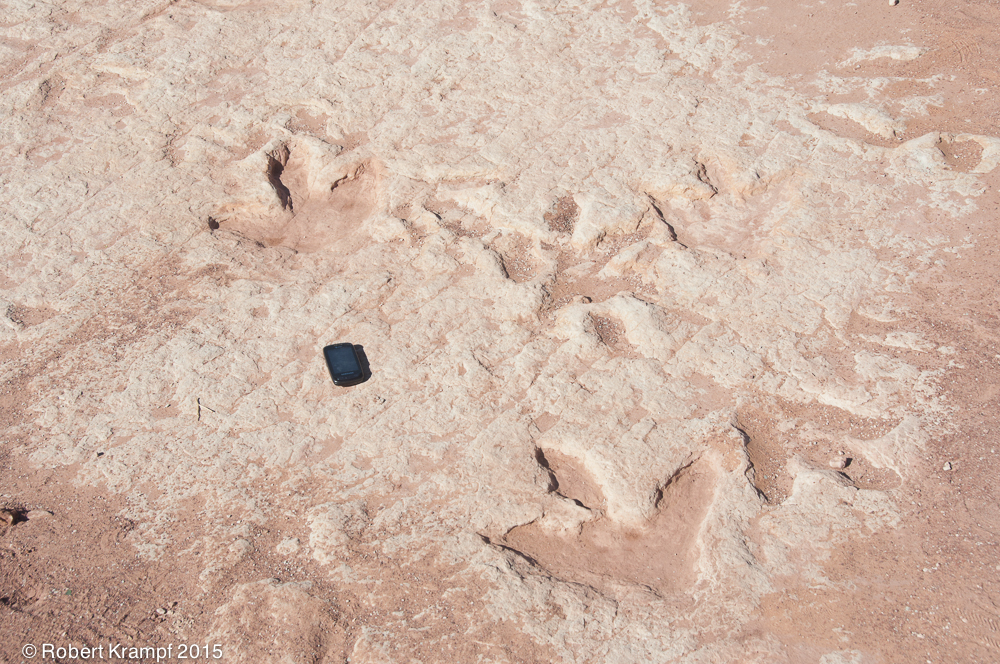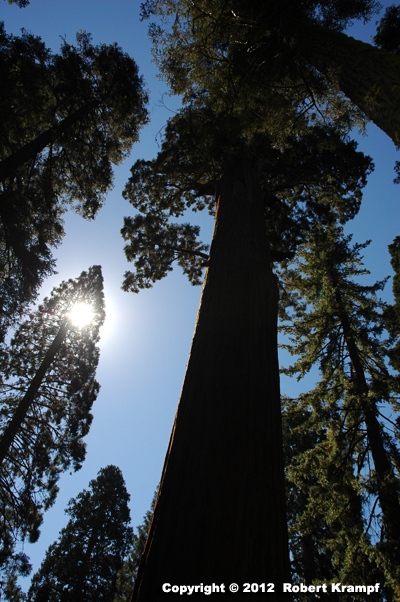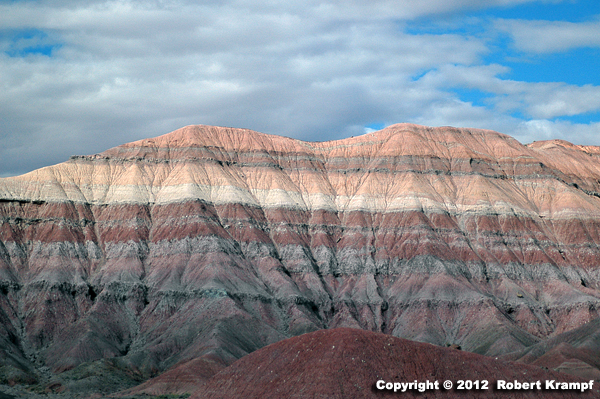Here are some science questions from the Sixth, Seventh, and Eighth Grade Standards to help you test your knowledge of the Next Generation Sunshine State Standards.
The questions are chosen randomly, so this quest will be different each time you reload the page.
* Click here to see only the most recently added questions.

This snow fell when the temperature outside was 39°F. How can you get snow when the temperature is above freezing?
-
The wind made it feel colder, allowing it to snow.
No. While wind chill can make it feel colder, it does not actually make it colder. -
It was colder in the clouds where the snow formed.
Yes. Even when air temperatures at the surface are above freezing, the clouds can be much colder. If the air at the surface is not too warm, the snow can reach the ground without melting. -
Rain froze into snow when it hit the ground.
No. Freezing rain forms ice, not snow. Light, fluffy snow flakes form as they fall through the air, not after they hit the ground. -
This is really hail instead of snow.
No. Hail is made of large chunks of ice, not tiny flakes.
Click to see which state standards this question tests, and which of my videos, experiments, and other resources support that topic.
Florida
SC.5.E.7.4 Distinguish among the various forms of precipitation (rain, snow, sleet, and hail), making connections to the weather in a particular place and time.
| Photographing Snowflakes | video, checked |
| Building a Rain Gauge, part 2 | video, checked |
| Building a Rain Gauge, part 1 | video, checked |
| Snow Rollers | text page |
| Review Weather-6 | practice |
| Review Weather-3 | practice |
SC.6.E.7.3 Describe how global patterns such as the jet stream and ocean currents influence local weather in measurable terms such as temperature, air pressure, wind direction and speed, and humidity and precipitation.
| Nephoscope | video, checked |
| Review Weather-6 | practice |
Utah
UT.4.II.2.a Observe and record effects of air temperature on precipitation (e.g., below freezing results in snow, above freezing results in rain).
| Photographing Snowflakes | video, checked |
| Building a Rain Gauge, part 2 | video, checked |
| Building a Rain Gauge, part 1 | video, checked |
| Review Weather-6 | practice |
| Review Weather-3 | practice |
NGSS
3-ESS2-1 Represent data in tables and graphical displays to describe typical weather conditions expected during a particular season.
| Nephoscope | video, checked |
| Pine Cone Weather | text page, free |
| Review Space-8 | practice |
| Review Weather-5 | practice |
| Review Weather-6 | practice |
| Review Weather-4 | practice |
| Review Weather-3 | practice |
| Review Space-5 | practice |
MS-ESS2-5 Collect data to provide evidence for how the motions and complex interactions of air masses results in changes in weather conditions.
| Cloud Types | video |
| Nephoscope | video, checked |
| Cloud Formation, part 1 | video, ClosedCaptions, checked |
| Pine Cone Weather | text page, free |
| Review Weather-2 | practice |
| Review Weather-6 | practice |
| Review Weather-4 | practice |
| Review Weather-3 | practice |
| Review Weather-1 | practice |

What season is Australia having in this graphic?
-
Spring
No. In the spring, the Earth's axis would not be tilted towards or away from the Sun. -
Summer
Yes! Australia is in the southern hemisphere, which is tilted towards the Sun. That tells us that it is summer there. -
Autumn
No. In the autumn, the Earth's axis would not be tilted towards or away from the Sun. -
Winter
No. Australia is in the southern hemisphere. If it was having winter, then the southern hemisphere would be tilted away from the Sun.
Click to see which state standards this question tests, and which of my videos, experiments, and other resources support that topic.
Florida
SC.4.E.5.1 Observe that the patterns of stars in the sky stay the same although they appear to shift across the sky nightly, and different stars can be seen in different seasons.
| Global Science | video, ClosedCaptions |
| Review Space-5 | practice |
| Review Space-8 | practice |
| Review Space-12 | practice |
SC.8.E.5.9 Explain the impact of objects in space on each other including: 1. the Sun on the Earth including seasons and gravitational attraction 2. the Moon on the Earth, including phases, tides, and eclipses, and the relative position of each body.
| Global Science | video, ClosedCaptions |
| Why is a Full Moon So Bright? | text page, free, checked |
| Review Space-13 | quest |
| Review Space-12 | practice |
Utah
UT.6.II.2.e Use a model to explain why the seasons are reversed in the Northern and Southern Hemispheres.
| Global Science | video, ClosedCaptions |
| Review Space-5 | practice |
| Review Space-8 | practice |
| Review Space-12 | practice |
NGSS
5-ESS1-2 Represent data in graphical displays to reveal patterns of daily changes in length and direction of shadows, day and night, and the seasonal appearance of some stars in the night sky.
| Global Science | video, ClosedCaptions |
| Finding Your Way | video, checked |
| Review Space-5 | practice |
| Review Space-8 | practice |
| Review Space-12 | practice |
MS-ESS1-1 Develop and use a model of the Earth-sun-moon system to describe the cyclic patterns of lunar phases, eclipses of the sun and moon, and seasons.
| Global Science | video, ClosedCaptions |
| Why is a Full Moon So Bright? | text page, free, checked |
| Review Space-6 | practice |
| Review Space-7 | practice |
| Review Space-9 | practice |
| Review Space-12 | practice |

This layer of rock contains fossilized tracks from a dinosaur (Dilophosaurus). The black object is my cell phone for size reference. What kind of rock is it?
-
Igneous
No. Igneous rocks formed from magma or lava. An igneous rock would not have fossilized dinosaur tracks. -
Sedimentary
Yes! Sedimentary rocks are deposited by wind, water, ice, or gravity, and they often contain fossils. The presence of fossils is one of the indications that a rock is probably sedimentary. -
Metamorphic
No. Metamorphic rocks have been changed by heat and pressure from a different kind of rock. The metamorphic process would have destroyed the tracks. -
It is not rock.
No. These dinosaur tracks are in rock.
Click to see which state standards this question tests, and which of my videos, experiments, and other resources support that topic.
Florida
SC.4.E.6.1 Identify the three categories of rocks: igneous, (formed from molten rock); sedimentary (pieces of other rocks and fossilized organisms); and metamorphic (formed from heat and pressure).
| What is a Rock? | video, learnalong, checked |
| Bioclastics: Rocks With No Minerals | video |
| Evaporites | video, learnalong, checked |
| Igneous Rocks and Bubbles | video, free, learnalong, Updated |
| Sedimentary Rocks | video, learnalong |
| Foliated and Unfoliated Rocks | text page, learnalong |
| Identifying Igneous Rocks | text page, learnalong |
| Intrusive and Extrusive Igneous Rocks | text page, learnalong |
| Light and Dark Minerals | text page, learnalong |
| Homemade Fossil Dig | text page |
| Review Rocks-1 | practice |
| Review Rocks-2 | practice |
| Review Rocks-3 | practice |
| Review Rocks-4 | practice |
| Review Rocks-5 | practice |
| Review Rocks-6 | practice |
| Review Rocks-8 | practice |
| Review Rocks-9 | practice |
| Review Rocks-7 | practice |
| Review Rocks-10 | practice |
| Review Rocks-10 | practice |
| Review Rocks-10 | practice |
Utah
UT.4.III.1.d Classify common rocks found in Utah as sedimentary (i.e., sandstone, conglomerate, shale), igneous (i.e., basalt, granite, obsidian, pumice) and metamorphic (i.e., marble, gneiss, schist).
| What is a Rock? | video, learnalong, checked |
| Evaporites | video, learnalong, checked |
| Igneous Rocks and Bubbles | video, free, learnalong, Updated |
| Sedimentary Rocks | video, learnalong |
| Light and Dark Minerals | text page, learnalong |
| Review Rocks-2 | practice |
| Review Rocks-3 | practice |
| Review Rocks-10 | practice |
| Review Rocks-10 | practice |
UT.8.III.1.c Categorize rock samples as sedimentary, metamorphic, or igneous.
| Igneous Rocks and Bubbles | video, free, learnalong, Updated |
| Sedimentary Rocks | video, learnalong |
| What is a Rock? | video, learnalong, checked |
| Light and Dark Minerals | text page, learnalong |
| Review Rocks-2 | practice |
| Review Rocks-3 | practice |
| Review Rocks-10 | practice |
| Review Rocks-10 | practice |
NGSS
MS-ESS2-1 Develop a model to describe the cycling of Earth’s materials and the flow of energy that drives this process.
| Identifying Minerals | video, learnalong |
| Sedimentary Rocks | video, learnalong |
| What is a Rock? | video, learnalong, checked |
| The Rock Cycle | video, learnalong |
| Bioclastics: Rocks With No Minerals | video |
| Evaporites | video, learnalong, checked |
| Definition of a Mineral | video, checked |
| Igneous Rocks and Bubbles | video, free, learnalong, Updated |
| What is a Mineral? | video, checked |
| Light and Dark Minerals | text page, learnalong |
| Review Rocks-1 | practice |
| Review Rocks-2 | practice |
| Review Rocks-3 | practice |
| Review Rocks-4 | practice |
| Review Rocks-5 | practice |
| Review Rocks-6 | practice |
| Review Rocks-8 | practice |
| Review Rocks-9 | practice |
| Review Rocks-7 | practice |
| Review Rocks-10 | practice |
| Review Rocks-10 | practice |
| Review Rocks-10 | practice |

Why are trees an important part of the water cycle?
-
Trees need water.
No. While trees do need water, that is not why they are part of the water cycle. -
Transpiration
Yes! In order to get nutrients up to the top of a tree, it has to let water evaporate from its leaves. This process is called transpiration. One tree can put hundreds of gallons of water into the air as water vapor every day. -
Trees help prevent erosion.
No. While trees can help prevent erosion, that is not why they are part of the water cycle. -
Condensation
No. Trees are not a major source of condensation.
Click to see which state standards this question tests, and which of my videos, experiments, and other resources support that topic.
Florida
SC.4.P.8.2 Identify properties and common uses of water in each of its states.
| Wonderful Water | video, checked |
| A Watched Pot | video |
| Wax and Wood, part 1 | video, checked |
| Wax and Wood, part 2 | video, checked |
| Photographing Snowflakes | video, checked |
| Ice Cream Science | video, checked |
| 75% Water | video, checked |
| Crushed Can | video, checked |
| A Boat Full of Holes | video, checked |
| A Bouncing Water Balloon | video |
| Cloud Types | video |
| Making a Solar Still | video |
| Water on a String | video, blog, ClosedCaptions |
| Adding to a Full Cup | text page |
| What Really Happens With Evaporation? | text page, free, checked |
| A Clean Trick | text page |
| Review Weather-8 | practice |
| Review Weather-10 | practice |
SC.5.E.7.1 Create a model to explain the parts of the water cycle. Water can be a gas, a liquid, or a solid and can go back and forth from one state to another.
>>> Teacher Page: Water Cycle
| Cloud Formation, part 2 | video |
| Cloud Types | video |
| Making a Solar Still | video |
| A Watched Pot | video |
| Photographing Snowflakes | video, checked |
| The Water Cycle | video, checked |
| A Model of the Water Cycle | video, ClosedCaptions, checked |
| Review Weather-1 | practice |
| Review Weather-2 | practice |
| Review Weather-8 | practice |
| Review Weather-10 | practice |
SC.6.E.7.2 Investigate and apply how the cycling of water between the atmosphere and hydrosphere has an effect on weather patterns and climate.
| Cloud Types | video |
| Nephoscope | video, checked |
| The Water Cycle | video, checked |
| Weather and Climate | video |
| Pine Cone Weather | text page, free |
| Review Weather-9 | practice |
| Review Weather-10 | practice |
| Review Weather-8 | practice |
Utah
UT.4.I.2.b Describe the processes of evaporation, condensation, and precipitation as they relate to the water cycle.
| The Water Cycle | video, checked |
| A Model of the Water Cycle | video, ClosedCaptions, checked |
| Making a Solar Still | video |
| Wonderful Water | video, checked |
| A Watched Pot | video |
| Photographing Snowflakes | video, checked |
| Cloud Formation, part 1 | video, ClosedCaptions, checked |
| A Cool Experiment | text page |
| What Really Happens With Evaporation? | text page, free, checked |
| Review Weather-8 | practice |
| Review Weather-10 | practice |
UT.4.I.2.c Identify locations that hold water as it passes through the water cycle (e.g., oceans, atmosphere, fresh surface water, snow, ice, and ground water).
| Photographing Snowflakes | video, checked |
| A Model of the Water Cycle | video, ClosedCaptions, checked |
| 75% Water | video, checked |
| Review Weather-8 | practice |
| Review Weather-10 | practice |
NGSS
MS-ESS2-4 Develop a model to describe the cycling of water through Earth’s systems driven by energy from the sun and the force of gravity.
| A Model of the Water Cycle | video, ClosedCaptions, checked |
| Cloud Formation, part 2 | video |
| Making a Solar Still | video |
| Wonderful Water | video, checked |
| Cloud Formation, part 1 | video, ClosedCaptions, checked |
| The Water Cycle | video, checked |
| Review Weather-8 | practice |
| Review Weather-10 | practice |

This is a photograph of the Painted Desert in Arizona. These layers of rock have not been folded or overturned, so we know that the layer on the bottom is the oldest. This is based on:
-
The Law of Superposition
Yes! The Law of Superposition tells us that unless the layers have been disturbed, they will be in order of their age, with the youngest on the top, and the oldest on the bottom. -
The Law of Crosscutting
No. The Law of Crosscutting tells us that a feature (crack, fault, igneous intrusion, etc.) that cuts through a layer of rock is younger than the layer it cuts through. That makes sense, because the layer would have to be there first, before it could be broken by a fault, etc. -
The Law of Relativity
No. There is a theory of relativity, which deals with the basics of physics, not geology. There is no Law of Relativity. -
The Law of Thermodynamics
No. The Law of Thermodynamics deals with energy, not with layers of rock.
Click to see which state standards this question tests, and which of my videos, experiments, and other resources support that topic.
Florida
SC.7.E.6.3 Identify current methods for measuring the age of Earth and its parts, including the law of superposition and radioactive dating.
| Imagining Geologic Time | video |
| Reading the Rocks: Law of Superposition | video |
| Reading the Rocks: Law of Crosscutting | video |
| Reading the Rocks | text page |
| Review Geologic Time-1 | practice |
| Review Geologic Time-2 | practice |
| Review Geologic Time-3 | practice |
Utah
UT.8.III.3.c Explain why some sedimentary rock layers may not always appear with youngest rock on top and older rocks below (i.e., folding, faulting).
| Sedimentary Rocks | video, learnalong |
| Review Geologic Time-1 | practice |
| Review Geologic Time-2 | practice |
| Review Geologic Time-3 | practice |
NGSS
4-ESS1-1 Identify evidence from patterns in rock formations and fossils in rock layers to support an explanation for changes in a landscape over time.
| Reading the Rocks: Law of Superposition | video |
| Reading the Rocks: Law of Crosscutting | video |
| What is a Rock? | video, learnalong, checked |
| Reading the Rocks: The Present is the Key to the Past | video, ClosedCaptions |
| Paleo Cookies | video |
| Evaporites | video, learnalong, checked |
| Igneous Rocks and Bubbles | video, free, learnalong, Updated |
| Sedimentary Rocks | video, learnalong |
| Homemade Fossil Dig | text page |
| Review Rocks-1 | practice |
| Review Geologic Time-1 | practice |
| Review Rocks-4 | practice |
| Review Geologic Time-2 | practice |
| Review Rocks-5 | practice |
| Review Rocks-6 | practice |
| Review Rocks-8 | practice |
| Review Rocks-9 | practice |
| Review Rocks-7 | practice |
| Review Rocks-10 | practice |
| Review Geologic Time-3 | practice |
